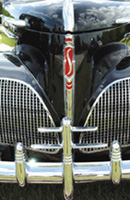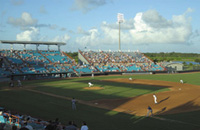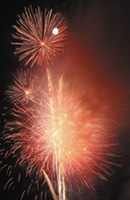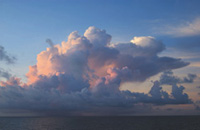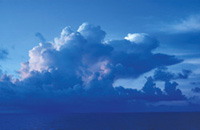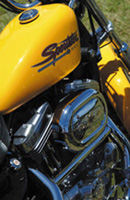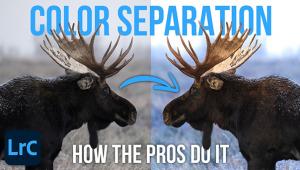Nikon D1x
Defining The Professional Digital SLR
The long awaited and anticipated Nikon D1X arrived in our offices the other day, and we couldn't wait to get to work with it. To those who have worked with a Nikon D1 the camera offers similar handling and workflow, although there have been some exciting upgrades and some new choices added to the mix. To those who have not this can be a formidable piece of gear, given all the options it affords. Although this is in many respects similar to a pro SLR, it does not allow the user to simply pull it from the box and begin shooting. But taking the time to consider the options and extras the D1X affords is well worth the effort. The Nikon D1X represents a particular milestone in photography, bringing a 5.47 megapixel chip to Nikon System imaging. This is a decidedly professional camera in both features and price. At $6130 suggested list it's a far cry from an everyman camera, but given comparable rates for others in this class it's not an off-putting price either. Its sibling camera is the D1H. Sibling is correct but twin is more accurate, given that they were born at the same time. The D1H offers a lower resolution chip, albeit with a faster framing rate for more consecutive shots. Thus, the X is clearly aimed at the bigger picture market while the H offers straight appeal to sports, scientific, and editorial photographers who need those amazingly fast (for a digital camera) throughput rates. Any camera worth the pro moniker must have sturdy construction, and the D1X has a solid yet lightweight magnesium body. Controls are intuitive for anyone who's handled a pro SLR in recent times, with of course more buttons and hidden menus that define the digital genre. The camera has several changes from the original Nikon D1, the first solely Nikon manufactured digital SLR introduced in 1999. |
|||
5-Plus Megapixels Just how many images you can get on your memory card with each file format and compression is determined by how large that card's capacity might be. Nikon shipped us a 96MB card with the camera, which seems the minimum size we'd suggest unless you're going to use this camera for web images. The camera also accepts Type II cards, so the big Microdrive capacities can also be used to handle an assignment. And now that CompactFlash cards come in big capacities as well you can choose either one to get an assignment onto one card, or use a portable storage device as you go. So, when you start pulling in 16MB files per shot (as you do in RGB TIFF, Large) you might do well to consider a portable drive such as Digital Wallet or Digital Album for downloading as you work. Some folks working in this sophisticated realm might even choose the laptop route. |
|||
Just what do all those file sizes and formats add up to? Mainly choice, as the D1X allows you to work in just about any fashion you might desire. While it may seem complicated, it really is a way to meet the needs of just about any assignment and any image end use. Yes, you can shoot a 320KB image for the web with this camera, and get over 250 shots per 96MB card. But you would probably go for the larger file sizes to get all you can out of the recording for great prints and reproduction. Metering Options |
|||
Although you might come to rely on the 3D Color Matrix meter there's enough exposure overrides to satisfy the most demanding pro, including a +/-5 stop exposure compensation, center-weighted and spot metering, and aperture- and shutter-priority plus manual exposure modes. Shutter speed range is a rather incredible 30 sec to 1/16,000 sec. That's not a typo--1/16,000 sec at the top end. If you use the dedicated SB28DX and D-type lenses you get flash controlled by a five-segment TTL multi-sensor that offers 3D Multi-Sensor Balanced Fill Flash (also available with the B-50DX flash). If you use lenses other than D-type you can get Multi-Sensor Balanced Fill, Auto Aperture flash, or Non-TTL Autoflash, depending on the flash and lens in use. Plus there's the usual host of flash modes, including rear curtain sync, slow sync, and redeye reduction. Framing Rate Lens Factor Custom Options |
|||
You can choose from four presets or when using Nikon Capture 2 software you can draw your own curves and download them to the camera. This seems perfect for those who need to match a particular printer or separator and makes customizing curves to the end use of the image a matter that can be done before capture, and not later in an image-editing program. You can also choose from four sharpness presets, another labor saving step that eliminates the need to do this in post-processing. All your custom controls can be stored in one of four available "banks" for recall later. Interface Issues |
|||
Focus Control Playback |
|||
Using The D1X The LCD screen is bright and can actually be read in daylight, no mean feat these days. You can choose a "straight" playback, pull up a histogram for checking tonal distribution and/or have the monitor display overexposed areas with a flashing warning in the hot spots. We also worked with the SB28DX flash, which yields all the flash modes one could desire. In conjunction with D-type lenses the flash performed flawlessly in rear sync, slow sync, and fill-in daylight modes. In short, Nikon has brought all their flash technology to the flash/camera combo. Digital Thoughts |
|||
Technical Specifications Manufacturer |
- Log in or register to post comments
